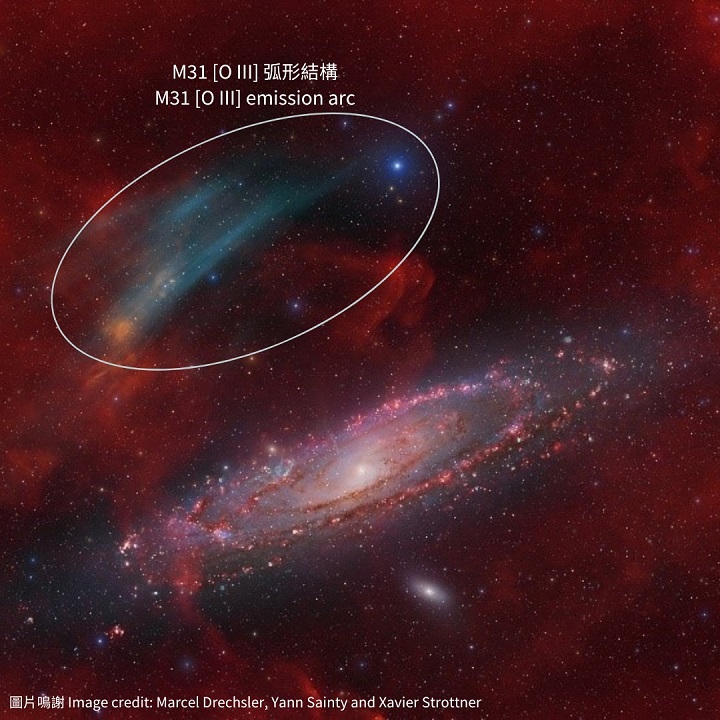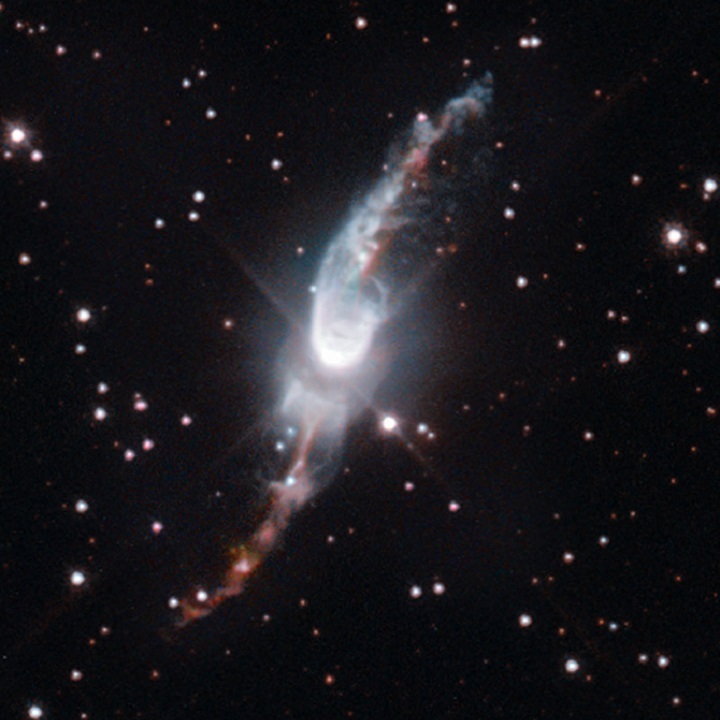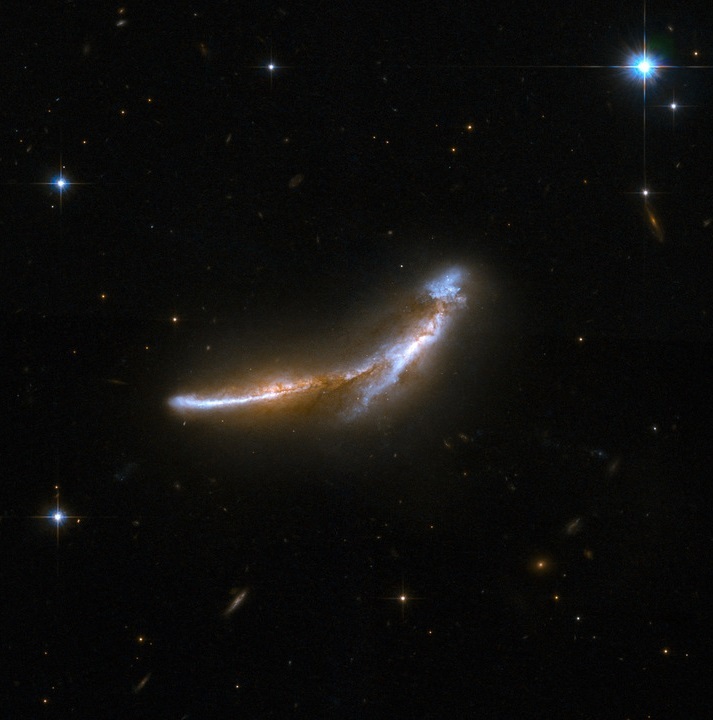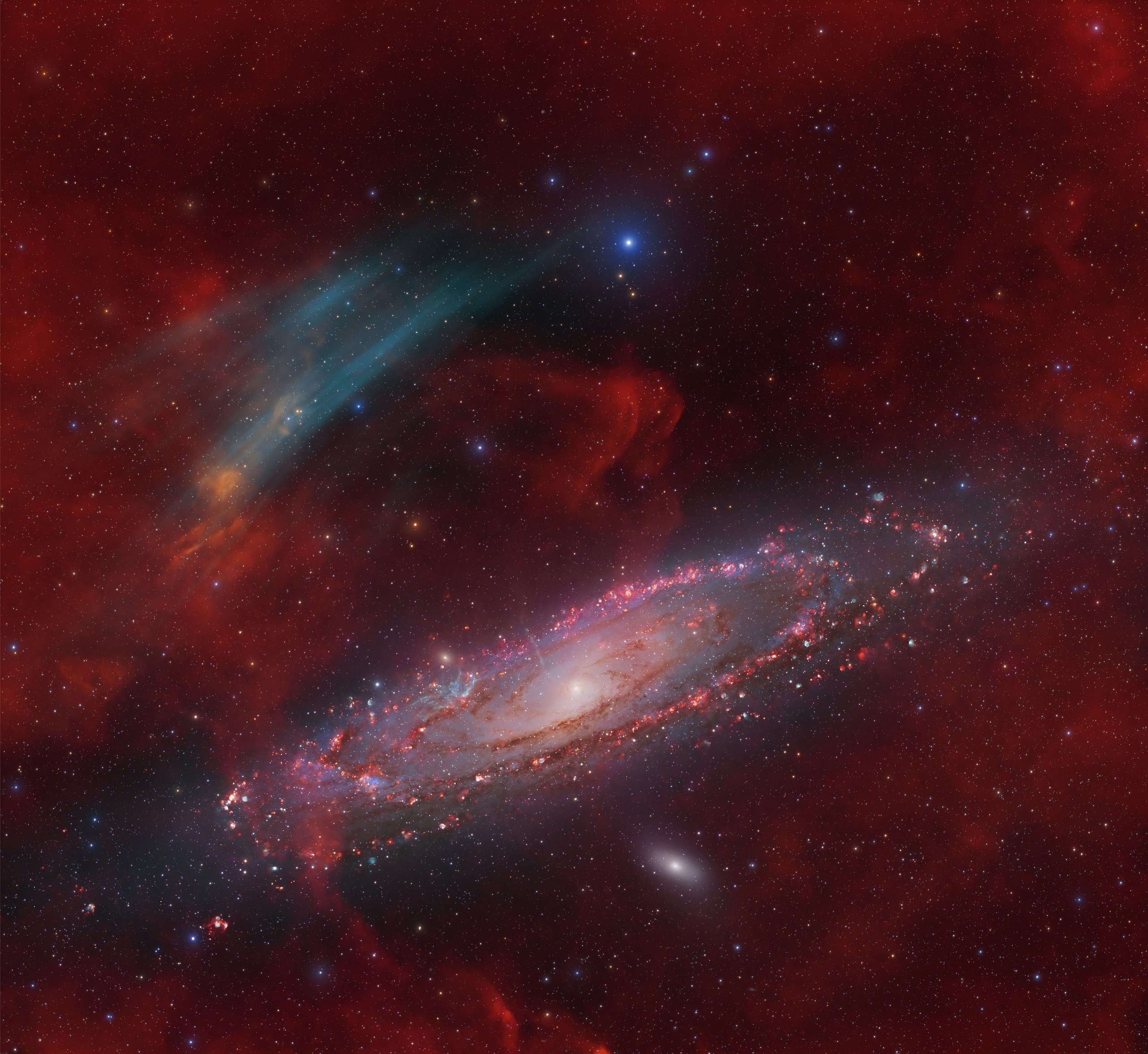
The Andromeda Galaxy (M31) is one of the most extensively photographed objects in the sky. You have probably seen pictures of it.
M31 is a large galaxy nearest to the Milky Way. Professional and amateur astronomers have observed this bright, well-structured galaxy for more than 400 years.
Recently, a massive cloud of gas adjacent to M31 which had been hiding from plain sight for decades was discovered. This structure has an extent of 1.5 x 0.45 degrees, only about 1 degree from the centre of M31. It has not been reported in the literature before and is entirely unknown to science.
To rule out the possibility of errors (e.g., reflections in the optics, artifacts of the detector, etc.), four photographers reproduced the image independently using [O III] filters from different manufacturers.
French astrophotographer Yann Sainty first captured this unique structure with a [O III] filter in August 2022. An extremely faint arc-shaped structure in the southeast of M31 was noticed.
The existence of the object is confirmed. The arc was named as "Strottner-Drechsler-Sainty Object 1" (SDSO1) after the three discoverers.
What is [O III]?
[O III] is a spectroscopic notation for doubly ionised oxygen (O2+). Excited oxygen ions go through forbidden transitions. When O2+ ions lose energy, they emit light detectable at 495.9 nm and 500.7 nm wavelengths, showing a blue-green spectral colour. [O III] is handy in studying nebulae.

Nature of SDSO1
The team joined hands with scientists and tried to determine the identity of SDSO1, possibilities include:
Planetary nebula
White dwarf generates extreme heat and ionises surrounding gases, making them glow. Curved, filamentary structure and the absence of infrared and ultraviolet lights could correspond to a planetary nebula ejected from a star at the end of its life. However, all potential white dwarfs in the region are too cold to ionise the amount of [O III] detected.


Supernova remnant
A filamentary nebula with SDSO1 could be a remnant resulting from a supernova explosion. However, the team could not detect any radio or ultraviolet light to associate it with a supernova explosion.

Results of galaxy interaction
M31 is moving toward our Milky Way galaxy, suggesting a possible interaction between the haloes of two galaxies. But the arc seems to be a bit too close to M31 to fit into the picture.

Stellar streams
A stellar stream is formed when a globular cluster or dwarf galaxy was torn and stretched out by tidal forces, and stars started orbiting the galaxy. SDSO1 is likely one of the stellar streams of M31.

Information on the SDSO1 is minimal at this moment. The team is going to gather more information in the summer of 2023, including works about the spectrum of the structure, and hoping it would provide radial velocity information to identify whether SDSO1 is a part of M31.
Now, we can only hope that the identity of SDSO1 can be unveiled in the future. Although the identity of SDSO1 is still unknown, which option mentioned above do you think is the most possible?
To learn more, you can read the paper by the research team published in The Research Notes of the American Astronomical Society (AAS), online version: https://iopscience.iop.org/article/10.3847/2515-5172/acaf7e
Original image and more details: https://www.astrobin.com/1d8ivk/
(27.3.2023 update)
The team has detected and analysed the spectra of SDSO1. According to the redshift value of SDSO1, the team considered that SDSO1 does not belong to M31 and tentatively assumed that it is a piece of a supernova remnant closer to the Earth. Related paper (English only): https://www.aanda.org/articles/aa/full_html/2023/03/aa46311-23/aa46311-23.html


